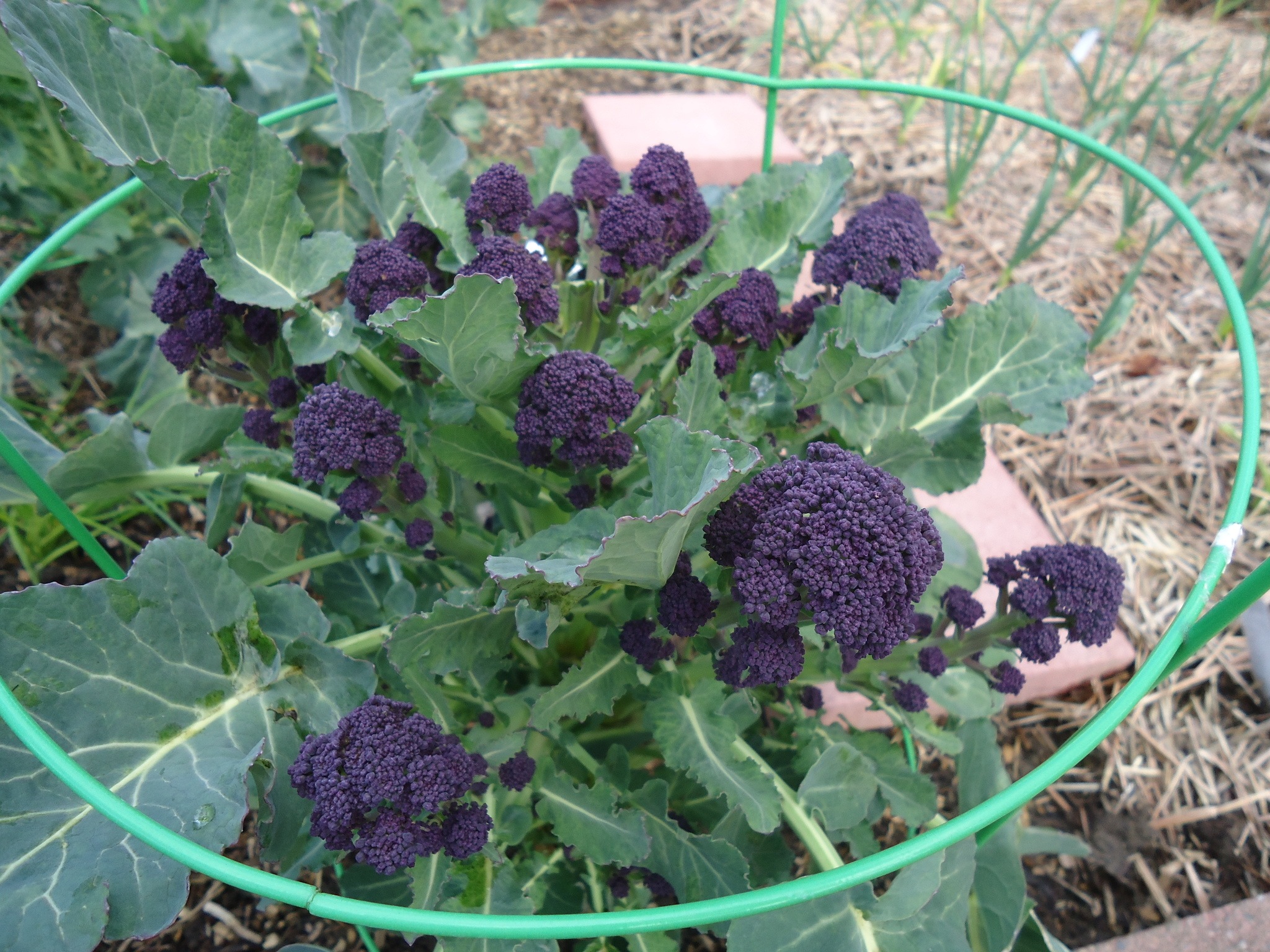Broccoli has become one of the most popular vegetables in the United States. It is a great crop for the cool Pacific Northwest growing season and has many varieties that will do well in local gardens.
Growing combinations of broccoli types allows us to eat this delicious vegetable year-round. Here are some favorite types of broccoli to grow and eat.
Calabrese broccoli: This is the most popular type of broccoli in the U.S. and Canada, and the type most of us think of when we say “broccoli.” It has light green stalks topped by a compact head of umbrella-shaped clusters of green florets sometimes tinged with purple. This variety of broccoli is named after the Italian province of Calabria, where it was first grown.
Broccoflower: A cross between broccoli and cauliflower, this vegetable comes in two types: one that looks just like a green cauliflower and another — usually called Romanesco — that also looks somewhat like a green cauliflower but has distinctive spiky florets forming ornate fractal-like (repeating, never-ending) patterns. The taste of both varieties is mild and more like cauliflower than broccoli.
Broccolini: A cross between gai-lan (Chinese broccoli) and broccoli, broccolini can be recognized by its deep green color and long, slender stalks ending in small broccoli-like florets. Sweeter and more tender than broccoli, broccolini is cooked using the same methods as broccoli, but requires a shorter amount of time. While some people peel broccoli stalks before using them, broccolini requires no peeling; broccolini is completely edible, from stem to flower.
Purple broccoli: This compact-headed hybrid has small purple florets that turn green once cooked. While it looks more like purple cauliflower than broccoli, it tastes decidedly like broccoli and adds color and interest to your garden.
Sprouting broccoli: This variety is closer in growing behavior to wild cabbage and likely existed before the common type of broccoli most of us eat today. Sprouting broccoli can be purple or green and has multiple smaller heads branching off its main stalk that increase the size of the harvest, and the plant itself, substantially. It tastes identical to regular broccoli.
Home-grown
As always, home-grown varieties taste better than those that are store-bought. Just buy your seed or transplants from vendors that cater to the unique challenges of gardening on the North Olympic Peninsula.
If we choose the right varieties, and time our planting, we can harvest broccoli from autumn to mid-summer the following year. Sprouting broccoli is extremely hardy, tolerating temperatures as low as 10 degrees; it’s a good winter crop that is planted in mid- to late summer and harvested in late winter or early spring.
Most other types of broccoli are planted in early spring for a summer crop, or mid-summer for a fall crop.
Broccoli needs cool weather, full sun and rich soil. Plant your broccoli where it will get least 6 hours of sun daily and has fertile, well-drained, moist soil with plenty of organic matter.
For best results with winter plantings, select a south-facing site with some protection from prevailing winds. A cloche or row cover can be used to protect from excessive rains and freezing temperatures. Raised beds can help to improve drainage.
Be adventurous. Give the many types of broccoli a try and eat this delicious, nutritious vegetable year-round!
Pearl of wisdom
Broccoli is a good source of vitamins A and C, folic acid and fiber and is one of the top cancer-fighting foods you can enjoy. All of that deliciousness and health in one fascinating group of plants. Let’s get growing!
For more
Get gardening information by attending the Brown Bag Lunchtime Seminar Series at the Clallam County Courthouse. On Oct. 27, Clallam Conservation District Executive Director Joe Holtrop will talk about rain gardens and runoff control.
Elaine Webber is a WSU-certified Clallam County Master Gardener intern.



